Most of us have experienced increased anxiety over the past few years. This increase has led to a greater awareness and understanding of what anxiety is and how it can show up. For people who already had an underlying anxiety disorder, this time may have led to an increase in their symptoms. For others, this was a first-time experience. It might be easy to look at children and think they don’t fully comprehend what is going on, so their anxiety won’t be as high. But actually, children are sensitive to the emotions of others just like adults are, and sometimes even more so, as they don’t yet have all the language to express their emotions and rely a lot on nonverbal cues.
Signs of an Anxious Children
Anxiety can manifest in different ways. Some may seem more straightforward: constant worry, waking in the night with bad dreams, being clingy, and crying often. Other signs, such as physical
symptoms like tummy aches, being fidgety, using the toilet frequently, and not sleeping, could have multiple causes, so they might not present clearly as anxiety at first. Other symptoms might be classified as related to another issue, such as ADHD, or simply put down as “bad behavior,”: such as difficulty concentrating or emotional dis-regulation, such as being quick to anger.
All of the above can be signs and symptoms of anxiety in children that we have experience helping you with here at our therapy practice in Woodland Hills. With all anxiety, the goal is not to eliminate it but rather to teach yourself and your child how to manage it. It can be challenging to identify difficult behaviors as anxiety and respond with sympathy rather than punishment. The goal is to normalize emotions and teach how to tolerate them. This can feel especially taxing when you have your anxious thoughts or feelings pushing you to the limits of your ability to stay calm and curious, but the methods we use with a child can also be utilized by the parent.
5 Ways to Parent an Anxious Child
1. Don’t take it personally:
No matter what the issue, no matter the emotions, no matter the type of tantrum your child is having, do not take it personally. This emotional outburst is not about your ability to parent, how much love you have for your child, or how much love your child has for you.
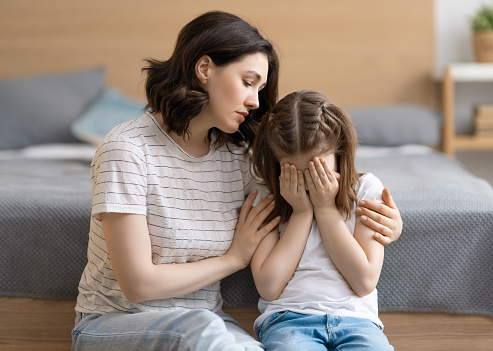
While you may be relatively new to managing your child’s anxiety, there are probably a bunch of other things that you do well without even thinking about it. It is easy to fall into the trap of only focusing on what is hard and using that as a measure of our skills as parents. This makes us feel ashamed or uncomfortable sharing our experiences and reaching out for help. You are never alone in this situation. You are not the only parent whose child has anxiety; you probably know other parents in the same situation. You are probably already feeling taxed from carrying the mental load, and the last thing you want is to try to negotiate with someone who cannot be reasoned with. I know it can feel impossible to set aside your emotional reaction to what is happening. If a meltdown is happening in public, the urge to pick up your kid and run away to where no one can see you is strong. There is an assumption of being judged that comes with this territory, that you’re not trying hard enough, or that you’re mistreating your child. But the moment your child’s anxiety manifests into challenging behavior often isn’t about you. It is often the result of strong emotions or needs that your child cannot articulate or feels too overwhelmed to communicate clearly.
2. Understand attention-seeking vs. attachment-seeking:
Learn to reframe the way you make sense of your child’s behavior. As parents, we fall into the trap of thinking that when a child is being anxious, they are just trying to get out of something
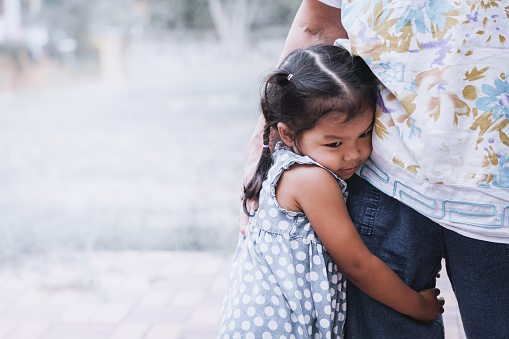
or, even worse, not being brave enough. This can lead to us seeking to strong-arm or coerce a change in behavior without identifying our child’s emotional needs or pushing a child to override their feelings and intuition to follow our commands. Most of the time, we write these actions off as “a cry for attention” without thinking about what attention means to a child. Why would a child want attention? The only logical answer is that they feel they aren’t getting any. As adults, we can understand that attention means feeling seen, feeling valued, feeling appreciated, and feeling important. It means feeling a connection with the other person and feeling significant to the other person. Why wouldn’t our children want those feelings from us?
A child’s attention-seeking behavior can sometimes show up as overreacting to minor upsets. Not wanting to wear that specific shirt, not being able to get that toy they’ve spotted in the store, having to wait their turn while a sibling gets to go first, etc. This upset may be the final straw for a child with anxiety. They may already feel stressed and tense in their bodies, that shirt may have a tag that itches, their ask for a toy may be an ask for play, and they may feel that going second is like not existing at all. Often, these emotional outbursts happen at less-than-convenient moments, such as when we are trying to get out the door or in the middle of a public place. We tend to panic and try to shut them down because we are on a schedule or don’t want people staring at us. Remember that it is a great moment to strengthen the bond and attachment when a child has anxiety. Being in that moment with your child is how you show up for them. Turning away from or shutting down unpleasant emotions doesn’t teach your child how to go through those tough times, it displays that their genuine feelings aren’t valid and/or shouldn’t be expressed. It is hard for a child to develop a healthy attachment with anyone who doesn’t seem to want or be able to meet their emotional needs from a place of support and compassion.
3. Check your anxiety levels:
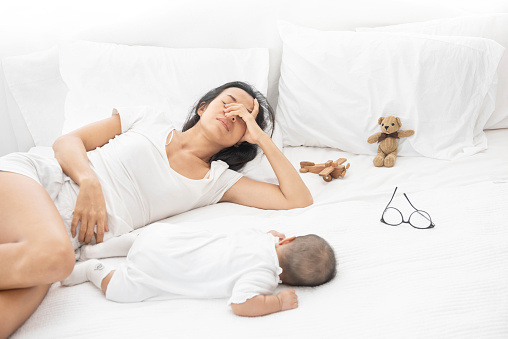
Have you ever heard the saying, “Anxious parents raise anxious children”? Before I talk about what might be true about such a quote, I would like to make an edit: untreated anxious parents raise anxious children. The fact that you have anxiety, depression, or are in recovery from any other mental health issue does not mean you will hypnotize your child into having one. There are different genetics involved with each mental health disorder that is a factor outside of environment and socialization. But biology aside, I want you to understand that your untreated mental health disorder will show up in how you interact with your child. Therefore, you are more likely to model anxious behaviors for your child that they can pick up. If you are in therapy for your anxiety, please do not come to the false conclusion that you have negatively impacted your child or screwed them up.
In any difficult situation, we have to check in with ourselves and our feelings. Maybe it is not just our child who is having anxiety; we are also struggling. Maybe it is not just our child who is embarrassed; maybe we are also nervous, shy, or embarrassed. You can’t help your child if you aren’t regulated. This may mean that you need to determine ways to take breaks from your child when you find that you are unable to regulate. You may feel overwhelmed, exhausted, or prone to anger.
If you decide to take a timeout from your child, always make sure to help them know it is not about them but that you need some time. Always let them know you will be coming back when you catch your breath. And while you walk away, ensure they are left with comforting objects, such as a coloring book, a stuffy, or another trusted adult. Not only does this give you the space to decompress, but it models for them that experiencing anxiety doesn’t have to lead to yelling or anger of any kind. When you return, you can talk to your child about how you felt and that you needed to calm down. It doesn’t have to be a massive conversation. “Sometimes, when I start to feel stressed in my body, I know it helps me to take a little walk and relax so that I can feel better and enjoy my time with the people I love.” As your child gets older, they may have questions or want to share their own experience with you, which lends itself to useful dialogue between you.
4. Create a toolbox:
Literally, grab a shoe box, have your child color/decorate it, and put things inside that bring them comfort. Like any self-care kit, this box may hold a mix of practical items and “placeholders”
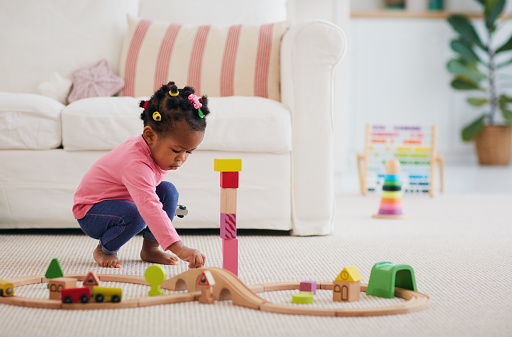
representing other things. This can mean that a small toy is in there, a fun activity book, a button representing going for a walk, a ball representing playing at the park, and more. This toolbox can help your child to work through their emotions by reaching for healthy outlets such as play, learning, comfort, and rest. Sometimes, it may act as a quick distraction to assist your child in releasing their fixation on their anxiety. Other times, it may contain coping mechanisms that make your child feel seen and understood.
One of my favorite quotes in therapy is to “ride the wave” of an emotion. I suggest parents find a small surfboard or a picture of it to help their child understand feelings come and go as waves, and our job is to ride it to the shore; once we get to the shore, we will start feeling better. A small surfboard toy can be placed in the toolbox as a tangible reminder of what your child is seeking to do when anxiety strikes. You could incorporate breathing in and out with the movement of the surfboard or changing locations from one room to another while moving the surfboard to benefit from a change of scenery.
Revisit the toolbox as necessary; give your child permission to determine what does and doesn’t work at any given time. This self-knowledge can be comforting and lend itself to your child finding solutions for anxiety on their own.
5. Model healthy ways to manage anxiety:
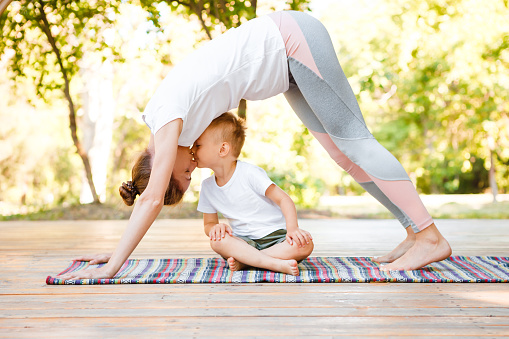
Do you have your own toolbox to use when you feel stressed out? Have you made a point of normalizing it for your child? Determine how your child is managing (or struggling to manage) at this time so that you know what their go-to is. You can talk to their teacher to get this information; you can also advise their teacher that you are seeking to model healthy ways to manage anxiety and let the teacher know what actions you are taking. They may be able to incorporate some of it into their daily activities or into their responses to your child’s anxiety.
It never hurts to seek help from a therapist on parenting and your own anxiety. A therapist is like a human toolbox, but one that can communicate with you as you go. Having an outlet for your own stresses and fears is a great way to prevent them from overflowing at home. Use your time in therapy to practice your coping methods, whether you are grounding yourself, using your senses to orient yourself in your space, taking a walk, smelling a comforting smell, or any other tactic, you might employ.
Modeling self-care outside of anxiety can also be beneficial. Does your child see you taking steps to support your own mental health? Do you have a network around you to lean on? Do they see how you are conscientious about setting yourself up to feel secure and confident in your day-to-day life? Are you making time for self-care and communicating about its importance with your child? It is easier to cope (and model strong coping) when you take time and space to look out for yourself.
If the pandemic was your first experience with anxiety, you might have discovered a deeper understanding within yourself that surprised or challenged you. The fact is that anxiety can show up in many different ways, at different ages, and for many different reasons, and extends well beyond global events. If you have a child who is showing signs of anxiety, you may wonder if it is a short-term response to the last few years or separate. That might remain to be seen in your case, but the solutions for dealing with that anxiety are the same either way and can begin right now.
Individual Therapy Services at Embracing You Therapy
Anxiety treatment in Woodland Hills, CA is a personal time and safe space for you to work on having a better relationship with yourself, your feelings, and your ideal life. We offer individual therapy for adults and young teens between the ages of 15 and 17 at Embracing You Therapy Group.
Contact us today for your complimentary 20-minute phone consultation with one of our Client Care Coordinators!
Meanwhile, check out our blog library for more readings on anxiety therapy!




